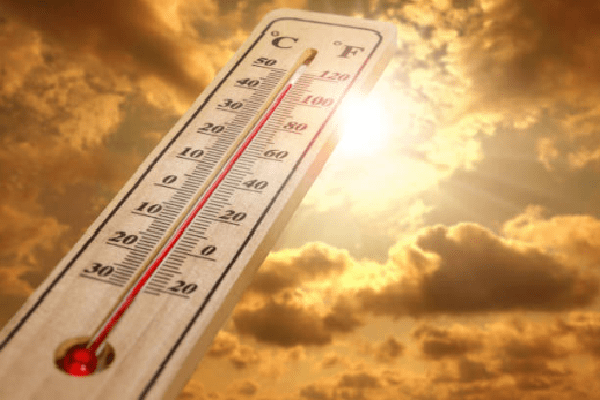Rest turned into disease >>>> Overheating and heatstroke
Overheating and heatstroke.

The human body is designed so that it independently knows how to maintain body temperature at a certain level, which is considered a physiological norm - on average, 36.6 in Celsius. Such a level of temperature in humans has developed over the period of evolution and has become optimal for chemical reactions occurring in the body during metabolism (exchange substances). But, since a person lives in an environment with a changeable temperature regime, which has a direct impact on the processes occurring in the body, together with the ability to regulate and maintain a certain level of internal temperature, the body has a developed system of adaptation to the ambient temperature, that is, it can acclimatize without changing body temperature.
In addition to energy (heat) obtained during metabolism, the body receives heat from outside (solar heat, artificially created heat sources). But sometimes this heat is unnecessary for the body. Heat exchange, and in this case we are interested in heat transfer, occurs through three processes: heat radiation, heat evaporation (sweating), convection (heating of air or objects in contact with the human body).
At an ambient temperature close to 20 in Celsius, a radiation process takes place - the body emits excess energy into the external environment. As the ambient temperature approaches body temperature (up to 35 in Celsius), the process of convection and evaporation starts. The body begins the cooling process by evaporating sweat from the surface of the skin, but sometimes under certain conditions (for example, in conditions of high humidity and excessively high air temperatures, warm clothes that are out of season), this process is difficult, since the same evaporation does not occur to the proper degree, on which the organism calculates. Heat transfer becomes difficult, the body begins to overheat and the person experiences discomfort.
In addition, endless sweating during prolonged exposure to high temperatures promotes the elimination of electrolytes, which the body needs to retain a certain amount of water and the prevailing level of concentration of substances dissolved in it. When the body temperature rises above the planned level (the limit occurs when the body temperature rises above 41 in Celsius), the blood flow rate increases (which makes the heart muscle work with a vengeance), and the process of protein denaturation starts, which affects the functioning of the immune system - production begins cytokines responsible for inflammation, and other agents of the immune system - interleukins. As a result, a chain of inflammatory reactions affecting various organs and organ systems is triggered in the body. And although the immune system is designed in such a way that it is able to interfere with these processes for some time (the release of other types of cytokines that hold back the development of inflammation processes that stimulate the production of proteins), a moment comes when this opposition depletes the body's resources, and the processes of insufficiency are increasingly manifested (heart failure, renal failure, etc.).
A person develops a number of signs characteristic of overheating (hyperthermia):
- rapid breathing
- heart palpitations
- a noticeable increase in body temperature (hot flashes)
- dizziness
- headache
- lethargy and lethargy
- muscle weakness throughout the body
- light-headedness or fainting
- nausea or vomiting
- there is a feeling of thirst
- redness of the skin.
Thus, the body signals that a person needs to take some measures to get out of this dangerous situation. By correctly assessing the body's signals (symptoms of feeling unwell), an overheating critical condition called heatstroke can be avoided.
Heatstroke is a malfunction of the compensatory functions of the body, which can be followed by death if no measures are taken. Heatstroke can be of varying degrees of intensity, but all degrees of heatstroke are characterized by a certain set of features:
- Severe weakness
- Shortness of breath
- Redness of the face and skin of the whole body
- Perspiration
- Dilated pupils
- Severe headache attack
- Darkening in the eyes
- Dizziness
- Weak pulse
- Nausea or vomiting
- Elevated temperature (up to 40 in Celsius)
Overheating and heatstroke causes the greatest damage to children (they have imperfect thermoregulation processes) and the elderly (who have weaker thermoregulation and many risk factors in the form of chronic diseases).
Very often, the symptoms of overheating and heatstroke are confused with symptoms of poisoning, which affects the provision of first aid to the victim in case of overheating and heatstroke. Therefore, one must be able to analyze in elementary terms the reasons that led to a number of these symptoms. But until the alleged or true causes of poor health are found out, the victim is transferred to a cool, well-ventilated room, placed in a prone position, provide free breathing (remove squeezing elements of clothing) and provide access to fresh air.

Read

Read


























